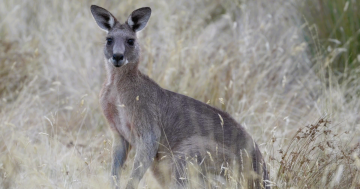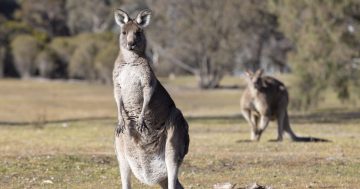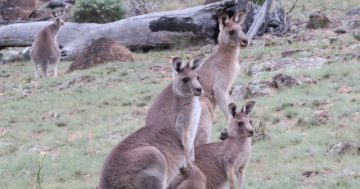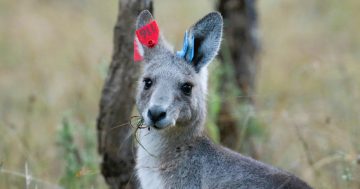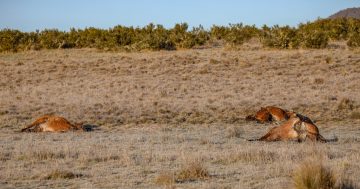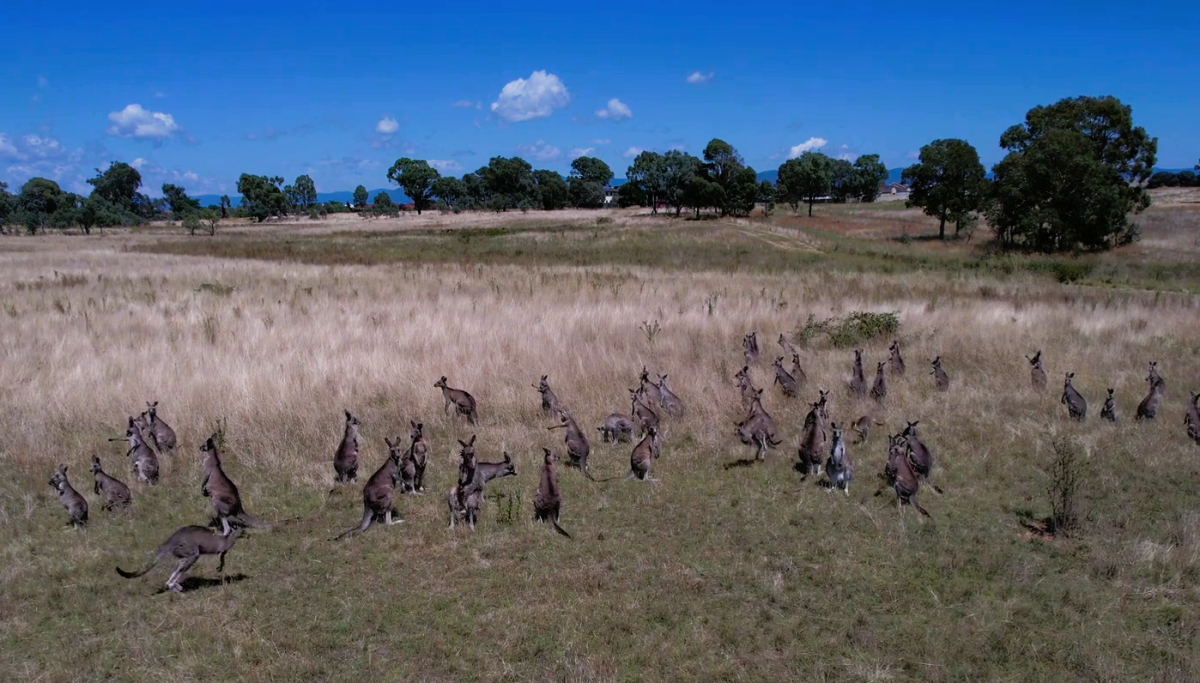
Kangaroo populations are controlled through a number of methods in the Territory, including culling. Photo: ACT Government.
The ACT Government and Environment Minister have been accused of misleading the public about kangaroo culling locations and practices off the back of documents released under Freedom of Information (FOI) laws.
Advocacy groups Save Canberra’s Kangaroos (SCK), Animal Liberation ACT and Animal Protectors Alliance released a joint statement claiming the government had “secretly butchered hundreds of kangaroos” in nature reserves throughout July and “knowingly” lied about commercial hunting bans.
The government has denied every accusation and a spokesperson urged the groups to “refrain from disseminating misinformation”.
The FOI documents, seen by Region, contain kangaroo management program shift reports from throughout the winter months.
The advocacy groups said these “secret” documents showed culling had been approved “under the cover of dark” at Ainslie/Majura, the Pinnacle and Mulanggari Nature Reserves.
“[The government] already turned the Bush Capital into a slaughterhouse of Australia’s most iconic animal,” SCK spokesperson Jane Robinson said.
“Now we discover they’re wilfully misleading Canberrans by concealing the late-night butchery and breaching their own ban on the commercial killing of animals.”
Both butchers and vets were on site for some of the nights, with one Pinnacle Nature Reserve culling shift detailing how it had reached the target of 51 kangaroos in one night while testing butchering at smaller sites for the first time.
“Tonight is the first night of operating at the Pinnacle for some time. Target density was achieved at this site in 2015 and has remained at or close to target density since,” it stated.
“The butcher was on site at the Pinnacle, this is the first time butchering has occurred on this site. Typically butchering is done in larger sites where staging is very inaccessible to the public.
“Temporary fencing was erected and used to screen the butcher. If this model is successful, it will increase the number of sites that we can butcher and increase the number of carcasses that can be utilised.”
The documents go on to detail the outcomes of various shifts, with about 3400 dog/fox meat baits produced and 28 skins salted and prepared for tanning across five nights in June, while 600 baits and five skins salted at another point.
“Skins will be provided to Ngunnawal community for cultural use, some will be tanned by community, and some will be provided already tanned,” the report stated.
The groups said this was proof the government was breaching its own rules around commercial hunting.
“ACT Environment Minister Rebecca Vassarotti’s ‘Kangaroo Management Program’ enables the hunting of kangaroos and joeys, but we are appalled and outraged it also allows butchering them into over 3400 meat baits,” Ms Robinson said.
“The kangaroo and joey meat baits have commercial value as they are then injected with the highly toxic and painful 1080 poison to kill foxes and dingoes.
“The minister and government have kept this hidden, including at this year’s committee hearings. It has only come to light because of the FOI documents.”
Minister Vassarotti’s office has refuted every claim made by the advocacy groups.
A spokesperson from the minister’s office stated the government maintained a dedicated website to keep the public informed about all aspects of the Eastern Grey Kangaroo Management Program and publicly released information about management activity in reserves – including at Ainslie, Pinnacle and Mulanggari in July this year.
Media outlets are also provided with statistics and targets from the program.
“Any suggestion that these measures lack transparency is factually incorrect,” the spokesperson said.
Information is also available about carcass utilisation.
“Carcasses, or parts thereof, are made available for indigenous cultural use, food for endangered species breeding programs, and a proportion of the kangaroo meat is processed into baits for use within the ACT Government wild dog and fox control programs,” the spokesperson said.
“The process by which carcasses are made available for indigenous cultural use is not commercial. They are not sold to the community, and the government does not make money out of this process.”
The move to utilise carcasses for the fox and wild dog baiting program was made after the community had expressed concerns about potential wastage from the program.
“It’s important to note that this does not involve any commercial aspect of the Eastern Grey Kangaroo Management Program, as there are no profits generated from these practices,” the spokesperson said.
“The insinuation that the government undertook the Eastern Grey Kangaroo Management program ‘in secret’ does not align with the evidence available to the public. Recognising that culling is a sensitive subject for some Canberrans, the government actively endeavours to transparently release information about the practice on an annual basis.
“It is at the discretion of these groups whether they choose to engage with the provided evidence.”
As for the claims Minister Vassarotti has misled the Assembly and the public, the spokesperson said the information the groups had ‘uncovered’ had been publicly available for years.
“While it’s entirely valid for these groups to hold opposing views regarding the cull, it is integral that they refrain from disseminating misinformation,” they said.












